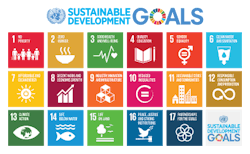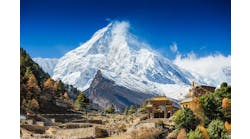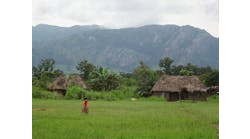Mozambique recently presented foreign investors with the opportunity to participate in the development of up to $500 million in off-grid renewable energy, including mini-grid and microgrid projects, in remote communities across 10 provinces.
Introduced by the Mozambique Ministry of Mineral Resources and Energy on September 20, the program comes as the nation accelerates efforts to achieve universal, sustainable electricity access by 2030. In addition to encouraging mini-grids and microgrids, the plan is expected to enhance use of hydro, solar PV and battery-based energy storage.
FUNAE, Mozambique’s sustainable energy development fund, aims to build hydro power mini-grids with a combined capacity of 1.01 GW in 332 villages. The plan also entails deploying 343 solar PV systems in rural communities, including 10 solar-storage mini or microgrids with capacities ranging from 1-3 MW, as well as another 111 ranging from 1-10 kW in power capacity.
Raising capital to develop the rural, off-grid renewable energy portfolio is the latest in Mozambique’s drive to achieve universal, sustainable energy access by 2030. Some 60 percent of Mozambicans do not have access to electricity. Furthermore, the urban-rural electricity access divide runs as high as 450 percent (69 percent urban compared to 15 percent rural access, according to recent estimates from the Sustainable Energy for All Global Tracking Framework.)
Suited to solar mini-grid and microgrid projects
A country of roughly 26 million people on nearly 497,096 square miles extending alongside Africa’s southeast coast, Mozambique receives an average 5.7 kWh/m2/day of solar insolation. As a result, the country is situated to take advantage of the low-cost and widespread availability of today’s crystalline silicon and thin-film solar PV panels, which are often used in mini-grid and microgrid projects.
Furthermore, the falling cost and higher performance of a new stationary, Internet-enabled lithium-ion batteries offers Mozambicans the opportunity to store and distribute solar electricity more evenly as needed during day and evening hours, and to expand sustainable energy access nationwide, even to the most rural and remote areas of the country.
Mozambique and the developing world increasingly favor mini-grids that integrate small-scale hydro, solar PV or biomass energy and batteries. Such resources are viewed as a reliable, efficient, resilient and environmentally friendly means of achieving sustainable development and universal electricity. Modular and scalable, they can be custom-designed, built and deployed rapidly to serve as long-term sources of electrical energy and power for urban neighborhoods, rural villages, towns and potentially even cities and entire regions.
Achieving sustainable universal energy access
Member nations have pledged to achieve universal, sustainable energy access as the seventh goal on the United Nations’ list of Sustainable Development Goals (SDGs). Sustainable energy is also inextricably intertwined with at least three other goals – SDG 1, eliminating poverty, SDG 5, achieving gender equality, and SDG 13, taking action on climate.
*United Nations
Raising the capital necessary and distributing it widely and equitably enough to achieve these goals poses a major hurdle and has turned out to be a persistent challenge, however.
Aiming to bridge the financing gap, the African Development Bank (AfDB)’s SE4ALL (Sustainable Energy for All) Africa Hub in 2015 launched Phase 1 of the Green Mini-Grid Market Development Program with grant funding from its Sustainable Energy Fund for Africa.
African power utilities have been operating off-grid mini or microgrids for many years, but they are based on diesel fuel power generation, AfDB points out. They’re doing so at a financial loss due to government fossil fuel subsidies that leave them selling electrical power and energy well below the costs of production and distribution, however.
In turn, that, along with other factors, has left most remote villages and towns without electricity, according to an April 2017 SE4ALL Africa Hub white paper entitled, “Mini Grid Market Opportunity Assessment: Mozambique.”
“The most cost-effective approach for powering mini-grids is to use local renewable energy sources, which are widely available across Africa,” write the white paper’s authors.
The Green Mini Grid Program aims to overcome several barriers, inadequate policy and regulatory frameworks, unproven business models, lack of market data and linkages, and lack of overall human, financial and technological resources among them.
[clickToTweet tweet=”Mozambique Presents $500M Plan for Off-Grid Renewables & #Microgrids” quote=”Mozambique Presents $500M Plan for Off-Grid Renewables and Microgrids”]
Path to future sustainability
In its Africa Energy Outlook 2014, the International Energy Agency (IEA) predicted that 70 percent of new rural electricity supply across all Africa would come from stand-alone energy systems and mini-grids by 2040, the report authors note.
The Green Mini Grid Development Program and others like it want to ensure that as much as two-thirds of that capacity will come from renewable energy. This requires reducing costs, and enhancing the ability of African nations to access, develop and manage green mini-grids and distributed renewable energy.
Commenting on the distributed rural renewable energy development portfolio offering, the Ministry of Mineral Resources and Energy said: “The initiative is intended to ensure that within a 15 year horizon the Mozambican population has access to electricity outside the national power grid, thanks to small autonomous systems.”
More than 3.7 million Mozambicans are benefiting from off-grid solar systems that were deployed from 2005 to 2014, according to FUNAE. Off-grid solar PV systems were installed in 11 cities, 669 schools, 623 health centers and 77 public buildings over the course of this period.
How quickly Mozambique realizes its sustainable energy and development goals — or whether it does so at all — remains to be seen. Having done the preparatory ground work, at present the main challenge is attracting financial capital from the private sector — banks, investment funds, and experienced project developers.
Track news about mini-grid and microgrid projects in Africa. Subscribe to the free Microgrid Knowledge newsletter.







